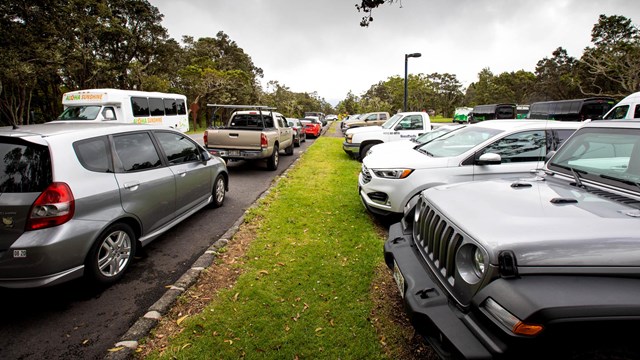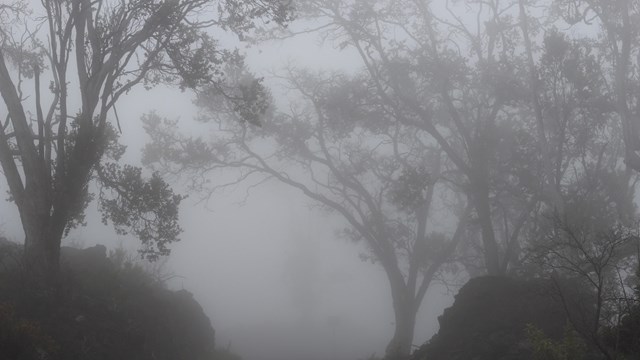
Volcanic activity is episodic, with eruptions separated by pauses lasting several days or more. Eruption can be as short as a few hours. Check webcams and the USGS daily volcano update for current conditions before visiting. Stay safe and follow all regulations. The USGS Hawaiian Volcano Observatory issues Volcano Updates for Kīlauea (external link) The new park roundabout is open, but construction and safety upgrades continue near the park entrance. Expect traffic congestion especially during eruptions. Park only in designated spots. The Welcome Center, Kīlauea Overlook and Uēkahuna usually have more open parking spots and are accessed by Crater Rim Drive West. Have a backup plan if your first stop is full. To reach Kīlauea Iki, Nāhuku lava tube, Devastation and Chain of Craters Road, use Crater Rim Drive East.
Live view of the ongoing eruption within Halemaʻumaʻu crater. Use the webcam to determine current volcanic activity.
[V2cam] East Halemaʻumaʻu crater Where are the Best Eruption Viewing Locations?The current eruption within Halema'uma'u crater can be seen from various overlooks along Crater Rim Drive. Although lava may be visible within the national park, conditions can change at any time. Changes in the eruptive activity and weather conditions such as fog or rain sometimes prevent any eruption viewing. Consider factors such as viewing experience, long waits and crowds, hiking ability, and available time when selecting where to view the eruption. Check out the park map and download the new NPS mobile app to help you navigate during your visit.
Eruption Viewing Tips

Air Quality
Hazardous volcanic gasses can present a danger to sensitive groups of people. Frequently check the air quality during your visit. 
Webcams
Get a live look inside the park, courtesy of USGS Hawaiian Volcano Observatory. 
Parking
Parking lots can be full by 10 am. Find out where and when you stand a better chance of finding an available parking space. 
Weather and Climate
Be prepared for the island's unpredictable weather. 
Safety
Many hazards exist in this dynamic landscape. Be prepared and informed so your visit is safe and enjoyable. |
Last updated: December 11, 2025
